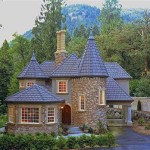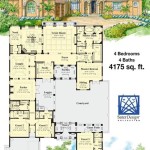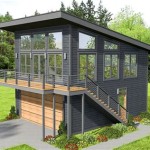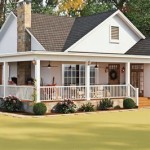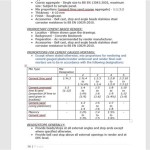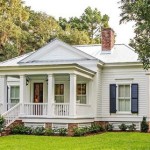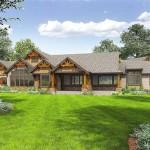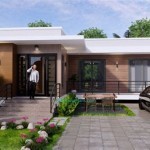House Plans With Unique Features And Specifications
Designing a home is a multifaceted process that extends far beyond simply arranging rooms on a blueprint. It involves carefully considering the lifestyle of the occupants, the surrounding environment, and the desired aesthetic. House plans with unique features and specifications are increasingly sought after by individuals looking to create personalized living spaces that cater to their specific needs and desires. These plans often incorporate innovative design elements, tailored materials, and advanced technologies to enhance functionality, comfort, and overall living experience.
A key element in developing house plans with unique features is understanding the client's vision. This typically involves extensive consultations to determine their preferences regarding architectural style, interior layout, and desired amenities. Considerations may include the need for specific room configurations, such as home offices, art studios, or entertainment areas. Accessibility requirements for individuals with disabilities should also be taken into account, as well as preferences for sustainable building practices and energy-efficient design.
The selection of materials plays a crucial role in defining the character and performance of a home. Unique specifications may call for locally sourced materials, reclaimed wood, or innovative composite materials that offer enhanced durability and environmental benefits. The integration of smart home technology is another common feature in modern house plans, allowing for automated control of lighting, temperature, security systems, and entertainment devices.
Detailed specifications are essential for ensuring that the construction process aligns with the design intent. These specifications outline the quality and performance requirements for all materials and systems, including structural components, electrical wiring, plumbing, and HVAC systems. They also provide guidance on installation procedures and quality control measures to ensure that the finished product meets the highest standards of craftsmanship.
Incorporating Smart Home Technology
The integration of smart home technology has become a defining feature of modern house plans. This technology allows homeowners to control various aspects of their homes through remote devices, such as smartphones or tablets. Smart lighting systems, for instance, can be programmed to adjust automatically based on time of day or occupancy, while smart thermostats can optimize energy consumption by learning the homeowner's heating and cooling preferences.
Security systems are another area where smart home technology offers significant benefits. These systems can include features such as video surveillance, motion detectors, and remote locking mechanisms, providing homeowners with real-time monitoring and control over their home security. Smart appliances, such as refrigerators, washing machines, and ovens, can also be integrated into the smart home network, allowing for remote monitoring and control.
The implementation of smart home technology requires careful planning and coordination between architects, builders, and technology integrators. It is important to select compatible systems and components that work seamlessly together. The design of the home should also take into account the necessary wiring and infrastructure to support the smart home technology.
One of the most important considerations when incorporating smart home technology is data privacy and security. Homeowners should take steps to protect their personal information and prevent unauthorized access to their smart home systems. This may involve using strong passwords, enabling two-factor authentication, and regularly updating software and firmware.
Designing for Sustainability and Energy Efficiency
Sustainable design principles are increasingly being incorporated into house plans to reduce the environmental impact of buildings and improve their energy efficiency. This involves a wide range of strategies, including the use of renewable energy sources, the selection of sustainable materials, and the implementation of energy-efficient building techniques.
Passive solar design is a key element of sustainable house plans. This involves orienting the building to maximize solar heat gain in the winter and minimize it in the summer. This can be achieved through careful placement of windows, overhangs, and landscaping. Insulation is another important factor to consider, as it helps to reduce heat loss in the winter and heat gain in the summer.
Renewable energy sources, such as solar panels and wind turbines, can be integrated into house plans to generate electricity on-site. Solar water heaters can also be used to provide hot water for domestic use. These technologies can significantly reduce the reliance on fossil fuels and lower energy costs.
The selection of sustainable materials is another important aspect of sustainable house design. This involves choosing materials that are durable, renewable, and have a low environmental impact. Examples of sustainable materials include reclaimed wood, bamboo, and recycled content products. It is also important to consider the embodied energy of materials, which is the energy required to extract, process, and transport them.
Water conservation is another important aspect of sustainable house design. This can be achieved through the installation of low-flow fixtures, such as toilets and showerheads. Rainwater harvesting systems can also be used to collect rainwater for irrigation and other non-potable uses.
Creating Accessible and Adaptable Homes
Designing homes that are accessible and adaptable is essential for ensuring that they can meet the needs of all occupants, regardless of their age or physical abilities. Accessible design features allow individuals with disabilities to live independently and comfortably in their homes. Adaptable design features allow homes to be easily modified to accommodate changing needs over time.
Universal design principles provide a framework for creating accessible and adaptable homes. These principles emphasize the importance of creating spaces that are usable by all people, to the greatest extent possible, without the need for adaptation or specialized design. Some key elements of universal design include wider doorways and hallways, ramps instead of steps, and lever-style door handles.
Bathrooms are one of the most important areas to consider when designing accessible homes. Features such as grab bars, roll-in showers, and adjustable-height sinks can make bathrooms more usable for individuals with disabilities. Kitchens can also be designed to be more accessible by incorporating features such as adjustable-height countertops and pull-out shelves.
Adaptable design features allow homes to be easily modified to accommodate changing needs over time. For example, walls can be designed to be easily removed or reconfigured to create larger or smaller spaces. Electrical wiring and plumbing can also be designed to be easily accessible for future modifications.
The integration of technology can also play a role in creating accessible and adaptable homes. Smart home technology can be used to control lighting, temperature, and security systems, making it easier for individuals with disabilities to manage their homes. Voice-activated controls and remote monitoring systems can also provide added convenience and security.
Detailed specifications are crucial for ensuring that accessible and adaptable design features are properly implemented. These specifications should address the specific requirements for each feature, including dimensions, materials, and installation procedures. It is also important to consult with accessibility experts to ensure that the design meets all applicable standards and regulations.
House plans with unique features and specifications offer an opportunity to create living spaces that are tailored to individual needs and preferences. By incorporating smart home technology, sustainable design principles, and accessible design features, these plans can enhance the functionality, comfort, and overall quality of life for homeowners.

12 Examples Of Floor Plans With Dimensions

How To Read A Floor Plan With Dimensions Houseplans Blog Com

How To Properly Read Floor Plans And What Details Look For

How To Read A Floor Plan With Dimensions Houseplans Blog Com

Floor Plans With Dimensions Including Examples Cedreo

Floor Plans With Dimensions Including Examples Cedreo

House Plan Drawing Everything You Need To Know

Bungalow Floor Plan With Dimensions

Floor Plans With Dimensions Including Examples Cedreo

House Plan With Internal Dimensions No Scale 4 The Information Scientific Diagram
Related Posts

